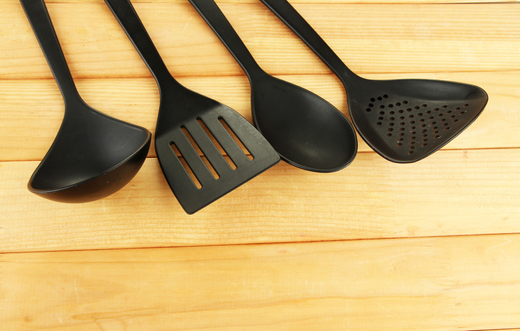
How would you define clean? When it comes to objects, it is rather straightforward. Washed, of course, is clean. When it comes to living things though, humans included, cleanliness must be defined in a different way.
Clean for me is chemical-free as much as possible, both on the skin and skin-deep, as well as within our bodies. Everything we come in contact during the day, being food, clothes, cosmetics, food containers, the food itself, the air we breathe, indoors and outdoors, everything we sit or sleep on, brings us face to face, literally or not, to a myriad of chemical compounds, many of which should be avoided.
Living in a bubble? Hardly an option. A good starting point would be to combine the simplicity of old days with the knowledge and awareness of today.
The main aspects to consider would be: practical but minimal, hence no clutter, objects made from renewable and sustainable resources, and in general, as close to what nature intended as possible.
It would go something like this:
- Make your home a chemical-free oasis. Go for bare floors, wood, not laminate, and bid farewell to carpets forever, they come loaded with flame retardants and in time they collect dust, mold and dust mites. If you prefer area rugs, consider wool, it is naturally fire and dust mite resistant, or bamboo. The same goes for mattresses, bedding and curtains. Choose latex mattresses, wool or silk covers, and bedding made of organic cotton (cotton is one of the most heavily sprayed crops), bamboo or hemp-based fabrics for your decorating and utilitarian needs. Clean towels anyone? Try bamboo or hemp. They are naturally pesticide-free and based on sustainable crops.
- Use clean cosmetics. Find a soap maker that uses simple, clean ingredients (or make your own if you are the intrepid kind) and forget about anything that says antibacterial. Such products contain triclosan, a chemical that has endocrine disruptive abilities and is environmentally persistent. The same goes for shampoo, conditioner, body lotions and any kind of cosmetic products, especially the ones for children. Steer clear of products that contain sodium lauryl sulphate, phthalates, and have ingredients that belong in a lab rather than in a garden.
- Clean the clean way. While most grocery and retail stores offer many options for green cleaning products, some still come loaded with fragrance and that could be a sign that chemicals such as phthalates are used (another class of endocrine disruptors that are slowly phased out from many cleaning products and cosmetics). If you want safe, affordable and completely non-toxic, use a simple natural detergent (dissolves grime), white vinegar (natural antibacterial) and baking soda (a great scrubbing agent) to clean your home. If enhanced antibacterial and anti-fungal properties are desired, add a few drops of tea tree oil.
- When it comes to kitchen utensils, choose plastic-free, unless you have no choice. Plastic, practical and ubiquitous as it may seem, has a darker side that cannot be ignored. Most plastics contain chemicals that have estrogenic effects, even when the product is dubbed BPA-free. BPA, or bisphenol A, a chemical that renders plastic clear and almost shatter-proof, affects human health and wildlife too. It is also found in the lining of cans and on thermal receipts. Children are most affected due to their growing bodies and while many companies have banned the use of BPA, recent studies showed that BPA-free is not estrogen-free. From plates to bowls to water containers, stick to bamboo, glass or stainless steel. For a more detailed post on cooking ware, please see our previous post here.
- Food? It’s simple: choose organic, local and grow a garden if you can. See our recent post on the need to reduce pesticide use here.
- To breathe a cleaner air while in your home, open windows often, ban dust bunnies as they are but carriers of dust mites and various chemicals, and reduce clutter as much as you can (make time for what matters). All activities performed inside, from working on your computer to cooking and sweeping, contribute to indoor pollution. Did you know that adding a few plants to your décor will help clean inside air from chemicals such as formaldehyde and benzene, two carcinogenic chemicals found in new furniture and various electronics we bring into our homes. Peace lily, ficus, spider plants and ferns are great indoor plants to start with.
Staying away from harmful chemicals is easier than you think. A good rule of thumb in appreciating the degree of processing is to consider how far the object (or food) is, compared to how nature intended it to be. Relying on natural, sustainable products and making clean choices in our daily life, we keep ourselves and our environment healthy. Everyone wins!
Daniela Ginta, MSc lives and writes in Kamloops, BC, after many years spent on the West Coast. She writes mostly on environmental and social issues, and occasionally shares insights into her life as a mother of two young sons to whom she wants to give two things: common sense and a social conscience. Daniela has written for many local and national publications, and has no fear when it comes to discussing big uncomfortable environment or society-related topics. You can visit her at www.thinkofclouds.com and www.danielaginta.com, or drop her a line at [email protected].




